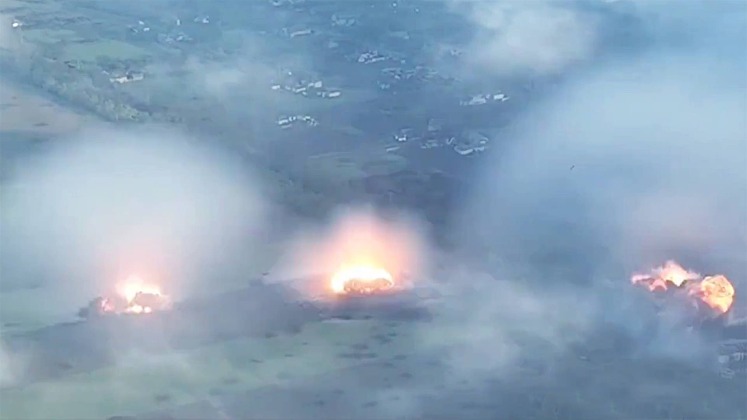A European intelligence official speaking to CNN has confirmed that Russia has been able to produce artillery rounds at over 250 percent the rate of the United States and European NATO members combined, with an output of approximately 3 million annually compared to 1.2 million for the U.S. and Europe. “The outcome in Ukraine depends on how each side is equipped to conduct this war,” the American outlet was further informed by a senior NATO official. The reports come as Ukrainian forces have faced mounting losses on the frontlines, and as Western sources speaking to Ukrainian personnel have reported the growing seriousness of munitions shortages on the country’s fighting capacity, including in more elite units. European states have particularly seriously depleted their munitions stockpiles to support the war effort, compensating for their inability to come close to sustaining artillery expenditure rates with their own production. This in February culminated in the Danish government pledging to totally empty its stockpiles of artillery rounds to sustain Ukraine’s ability to fight, with other European states expected to follow suit. Artillery has played a particularly central role in the conflict since its outset in early 2022, with its effective use being a central contributor to the tremendous casualties which Ukrainian ground units have suffered.
In December 2023 Ukrainian personnel serving under artillery brigades reported to the Washington Post that they had been forced to reduce ammunition expenditure by 80-90 percent to just 10-20 rounds per day. A member of the Ukrainian Army 148th Artillery Brigade, which operates Western-supplied 155mm howitzers, was quoted by the Post commenting regarding the shortages: “What can you do with 10 shells per day? It is barely enough to respond to their advances – we are not even talking about attacking their positions.” Ukrainian soldiers consistently said that they did not see Russian forces suffering from similar shortages. Russia has expanded its firepower advantages with the introduction of new precision guided glide bombs in vast quantities, allowing its aircraft to provide support on a tremendous scale which Ukrainian personnel have described as opening the “gates of hell” on their positions. Ukrainian air power had made no comparable contributions. The Russian tactical ballistic missile arsenal has also significantly increased its capacity for launching strikes on enemy positions due to a successful wartime surge in production of missiles for both air and ground launched systems.
The Western world’s inability to match Russia’s defence sector in productive capacity even when pooling their collective industrial capacities has potentially highly detrimental implications for its ability to assert military dominance, not only in Eastern Europe but across multiple other theatres. This was despite the very significant decline in the Russian defence sector and its productive capacities to just a fraction of Soviet era levels. Western states have sought to compensate for these productive deficiencies by scouring global markets for munitions, as well as applying political pressure to states such as Morocco and Pakistan to provide supplies to Ukraine. The situation for Ukrainian artillery units notably further worsened, however, after the outbreak of hostilities between Israel and Palestinian militia groups in the Gaza Strip in early October 2023, which led to a diversion of American artillery rounds previously intended for Ukraine to equip the Israeli Army. Russia, by contrast, has reportedly seen its stocks of artillery rounds supplemented by supplies from North Korea, which before the escalation of war in Ukraine in 2022 fielded the largest artillery force in the world. The country continues to maintain one of the largest stockpiles and productive capacities for artillery rounds. Supplementing Russia’s vast capacity for producing tactical ballistic missiles, North Korea was also reported from January to have delivered its own advanced tactical missiles to Russia for use in Ukraine.


